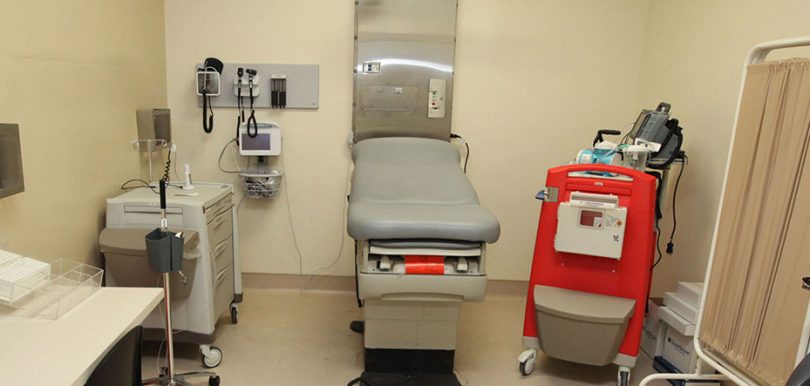UPDATE: As of Wednesday, March 25, two additional prison employees — one at California State Prison, Sacramento, and one employee at California Substance Abuse Treatment Facility and State Prison, Corcoran — have tested positive for COVID-19. This brings the number of staff cases to 9. There was still just one COVID-19-positive prisoner as of the March 25 update.
On Wednesday, the California Department of Corrections and Rehabilitation also announced a new dashboard for tracking the number and location of every prisoner who has been tested for COVID-19, as well as the number of those who have been found positive or negative, and the number of those who have recovered or died.
A prisoner at California State Prison, Los Angeles County (LAC), in Lancaster, has tested positive for COVID-19, the California Department of Corrections announced on Sunday evening, March 22.
The man, who is in stable condition, had been in isolation since March 19, when he informed the facility’s health care staff that he was feeling ill. He was tested the same day, and the results came back positive three days later.
Prison officials “will restrict movement at the institution while a contact investigation is underway and quarantine those deemed at-risk for an observation period,” according to the California Department of Corrections and Rehabilitation.
The number of CDCR employees working at state prisons who have tested positive for the virus has also increased by two, as of Sunday. Two employees at California State Prison, Sacramento, two employees at California Institution for Men, in Chino, and one employee at Folsom State Prison have tested positive for COVID-19.
The department has not shared a count of prisoners who have been tested and/or who are currently in quarantine due to suspected coronavirus. CDCR Press Secretary Dana Simas told WLA she expected the numbers to be released sometime this week. “We are still in the middle of cold and flu season so quarantine is not uncommon this time of year,” Simas said. The numbers are in the process of being quality-checked. “We want to be judicious in how we track this data,” she said.
As coronavirus spreads across the U.S., criminal justice reform advocates and others have been calling on state leaders to release a portion of the state’s prison population to reduce the likelihood and severity of a mass-outbreak within the prison system. Social distancing, the advocates have said, is not possible inside a prison. (Or inside a jail, as evidenced by New York City’s rising crisis.)
California’s prisons have long been overcrowded. Over the past decade, the state has been taking steps (sometimes enforced by federal judges) to reduce overcrowding in state prisons. Thanks to these steps, the state’s entire prison system is currently sitting at 130.9 percent of design capacity, a number that is still not ideal.
The Lancaster prison, where the first prisoner with a positive COVID-19 test is incarcerated, is more overcrowded than the state as a whole. Its population of 3,212 sits at 139.7 percent of capacity.
On a coronavirus FAQ page last updated on March 18, in response to the question of whether prisoners will be released early, the CDCR says officials “are continuously evaluating and implementing proactive measures to help prevent the spread of COVID-19 and keep our CDCR population and the community-at-large safe. Additional measures will continue to be developed based on the rapidly-evolving situation. Our top priority is the safety and security of the incarcerated population and the public.”
On Friday, U.S. District Judge Kimberly Mueller ordered the creation of a task force of California officials, lawyers for inmates’ rights, and other stakeholders to come up with a plan for responding to the spread of coronavirus in the state prison system. This plan may include reducing the prison population, something that many local sheriffs, including LA County Sheriff Alex Villanueva, have done to in an effort to better protect those locked in jails, as well as the people who work inside.

